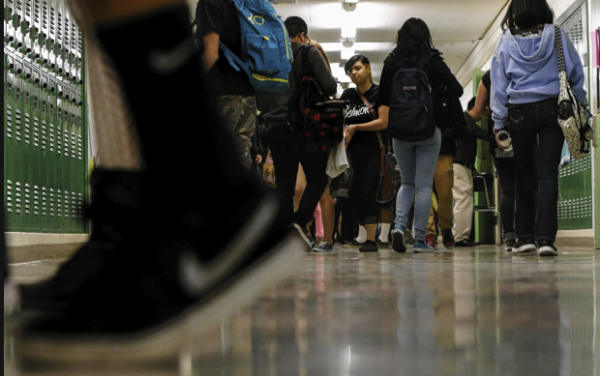1. You Have Customers; They Come First
School systems are complex organizations that meet the needs of various stakeholders, both internal and external. These stakeholders are the customers of your school system. The school system’s focus must flow through all of these customer pathways to the final and most important customer – the students. The mission of a school system and all staff members is to align all it’s brainpower, energy and resources in order support positive student outcomes.
Students do not “feel” averages. Have you ever been the parent going to pick up your child from a school activity and the school does not have information showing that you are approved to pick up the child? This frustrating delay can range from being more than an inconvenience to a group of upset parents showing up at a school board meeting to complain. Try explaining to those parents that 85 percent of the time there is no issue with the existing process. The worst case of 85 percent or even 95 percent being good enough is when we drop the ball on something that may greatly reduce a child’s potential. How could such a significant single miss be explained?
At its core Lean Six Sigma focuses on the customer – the customer’s wants, needs and perception of what is valuable. Meeting customer needs in Lean Six Sigma is like gravity – a constant, undeniable force that keeps all continuous improvement activity directed. To successfully implement Lean Six Sigma in public education, you must begin and end with a focus on students.

2. Learn from the Tortoise
The old fable could not be more accurate than when used to describe the successful implementation of Lean Six Sigma in public education. Success does not come quickly or as a “big bang”. You can have quick, big wins along the way, but no single breakthrough will sustain on its own over time.
If you begin to read books on Lean Six Sigma you see the phrase, “Lean Six Sigma is a journey, not a destination” come up time and time again. This implies that you will always be building a culture focused on continuous improvement – you will never cease building.
Lean Six Sigma is most powerful when you have people — tens or hundreds or thousands — within your school system making small incremental improvements, all the time, day after day. When this volume of incremental improvement is occurring, really big things seem to appear all at once.
Lean Six Sigma in public education can be a lasting significant change for good — improving efficiencies and effectiveness; optimizing systems to meet students needs now and tomorrow. Lean Six Sigma is trying something new, learning from each attempt, and trying again with a better idea -– over and over.

3. Processes = People
Lean Six Sigma is all about people. People come first. They always come first. There’s an old saying in Lean Six Sigma, “People won’t Lean themselves out of a job.” Lean Six Sigma views people as assets of high value to a school system. This means that we take the time to teach and educate all staff the basic principals of Lean Six Sigma and then we engage them to improve the value being delivered to students.
Successful implementations of Lean Six Sigma in public education require having your people onboard and supportive. All your processes are rooted in your personnel. Without personnel we have no processes. We must take time to teach and educate staff in order to succeed with Lean Six Sigma. Another old Lean Six Sigma saying is, “Hearts, Minds and then Hands.” People are what makes or breaks a successful implementation.

4. Go and See
If you start reading books on Lean Six Sigma you will inevitably see some Japanese words or phrases. Frankly, I tend to avoid that industry jargon, especially when working with school systems. Lean Six Sigma is a new concept in public education, and I often feel that integrating a lot of these words and phrases makes Lean Six Sigma harder to understand. However, there is one poetic expression that I haven’t quite found a better way to say in English – “Genchi Gambutsu”. This is roughly translated “Go and See”, but this does not communicate the full meaning of the phrase. The phrase implies getting up off your butt and getting out into your school system and seeing for yourself what’s going on! E-mails, reports, conference calls, gossip, pictures and even video – cannot tell you the whole story. As Paul Harvey use to say, “and now for the rest of the story….” you have to go and see things for yourself. The world is subtle, complex and filled with nuance. Often these nuances are critical to performance.
Take the appropriate staff with you. Tour lunchrooms during breakfast or lunch with your school nutrition director and kitchen managers; tour school buildings with your maintenance staff; tour classrooms with principals or other teachers during instruction. Successful implementation requires this “Go and See” attitude along with sharing what you see. Another old Lean Six Sigma adage is, “We see together. We learn together. We do together.”

5. “Without Standard, There is No Improvement”
This subheading is a direct quote from Taiichi Ohno, an industrial engineer and businessman considered the father of the Toyota Production System. Standardized work creates the foundation upon which the future of your school system’s performance can be based. After standardized procedures are in place, you can depend upon them, train them, and improve them year over year. You do not have to reinvent how things are done or suffer performance issues when staff members retire or get promoted to new areas. Standardizing work creates a sustainable legacy for your students. This is the end result of successfully implementing Lean Six Sigma in your school system.
If you are considering the implementation of Lean Six Sigma in a public school system, I would also ask you to consider what Lean Six Sigma is NOT by reading my previous post: Applying Lean Six Sigma in Public Education? What Lean Six Sigma is NOT.
